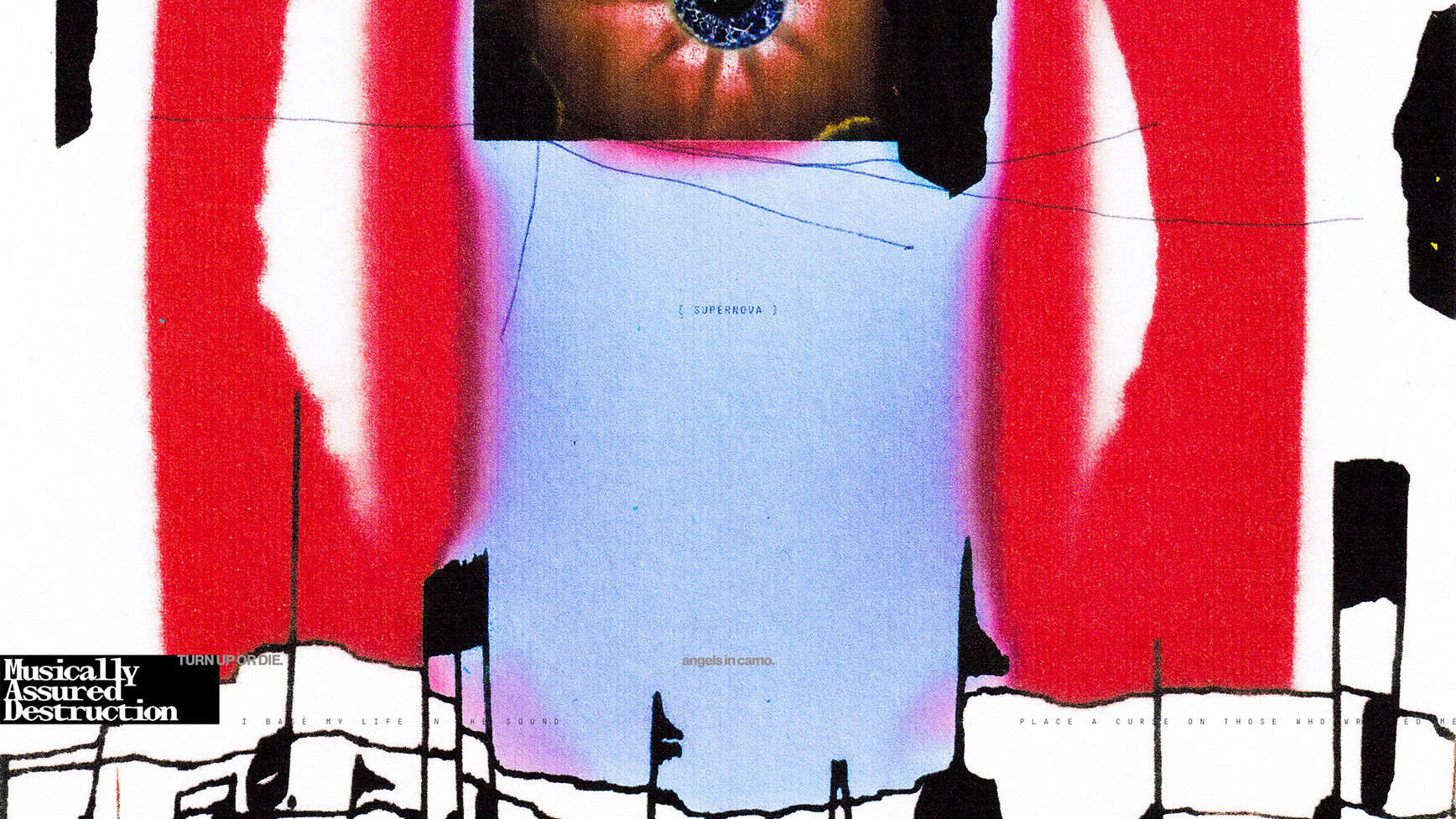See Joel's designs on Vertigo's Instagram, at his website, or on his Instagram.
I was asked to do a profile on a fellow UTS student in Visual Communication and, honestly, I wasn’t too sure how to approach it at first.
As someone who doesn’t study design, I wasn’t sure if I’d even understand the ins and outs of his work, but after chatting with Joel Brevig, better known by his professional name sickday, I realised that design is everywhere. In the small, strange details of everyday life that we often overlook. Design, at its core, is deeply versatile, and in Joel’s case, shaped by odd detours and odd moments of chance. His story begins, interestingly, with music. “When I was younger I wanted to be a music producer,” he explained. “I was making beats on my computer and putting them on SoundCloud, which I wanted cover art for, so I downloaded a cracked version of Photoshop and just started messing around with it.” What started as a workaround quickly pulled him in a new creative direction.
By high school, he was designing for artists and brands, realising that images could hold the same creative energy he once poured into sound. By 2022, he had committed to Visual Communications at UTS. “I felt like I’d learn a lot faster going to school for it than I could teach myself, which I think has been the case,” Joel told Vertigo.
Joel’s influences are interwoven with music in odd, unexpected ways. He absorbs the sounds he listens to and the strange ecosystems that orbit them. From packaging and videos to clothes and live shows, taking everything that stretches the artist’s world beyond the usual and spinning it into something larger.
His process reflects that fascination with worlds beyond the obvious. “If it’s work for someone else, I pretty much always have a brief, or at least some direction on where we want to go with any given project, so first I’ll take the time to understand what the outcome really needs to achieve, then from there it’s just executing. I think a lot of the process is just always exposing yourself to the things that inspire you rather than a plan to follow when a new project comes down, at least for what I do.”
When it comes to personal work, Joel experiments constantly, using materials and tools in unconventional ways, often blending digital and analog processes. He finds that working physically, with all the chance and randomness it brings, opens him up to unique results that wouldn’t emerge on a computer alone. There is no single process, just a continual exploration of what can happen when creativity meets oddity.
Such experiments have a way of leading to big opportunities. Joel has already worked with new and rapidly growing names like ONEFOUR and Ninajirachi. “The power of social media. A lot of luck and timing too honestly, it’s still crazy to me I even got to work on those projects, but if you make and share the kind of work you want to do, you’re way more likely to actually be able to do it.” His proudest moment so far was designing merchandise and branding for ONEFOUR. “Earlier this year I got to design a bunch of the merch and branding for ONEFOUR’s debut album, which was so cool to see out in the world.”
Studying has helped sharpen his approach, even as the ground beneath creative degrees grows shaky. Studying design at university has strengthened his ability to develop concepts past their inception and consider how form and function interact. Being surrounded by people who are equally passionate but have their own perspectives provides constant inspiration, shaping the way he thinks about design and encouraging him to experiment in new directions.
Yet, he is candid about the cuts here at UTS. “I think it’s a shame that a lot of resources we once had are going away, but I can’t say I have any strong positions on the future of design education. You can learn a lot of skills online, and for free, if you’re motivated enough. You won’t get the structure and pacing though. A lot of formal design education in my experience has been hearing different perspectives and running with what you think works for what you want to do when you go into the world. A lot of designers I’ve worked with in the music industry never even studied design formally. Equally as many did, though,” Joel explained to Vertigo.
This speaks to why design degrees are so important. They provide more than just technical skills; they shape the way students think and experiment. The specialised nature of these programs allows students to explore areas they are genuinely passionate about, and for many, profoundly shape their personal and professional lives, making the case for preserving them stronger than ever.
For students feeling unsure and deeply affected by any of the cuts (myself being one of those students), Joel’s guidance cuts through the noise. He encourages making work for yourself constantly and learning as much as possible from that process.
By pulling on the threads you enjoy, you naturally attract more of the kind of work you want to do. Joel finished up by saying “sometimes you have to take no for an answer. Your ideas will get stepped on a lot but… you just have to decide if you’re gonna be hard done by or learn from it and try again.” Some good advice, I think.
So, Joel’s path into design might have been a little crooked but it is exactly that odd mix of chance that defines his practice. As sickday, he shows how creative lives often take shape in unexpected ways, and, even as a student of journalism myself, his work and words have inspired me to see the oddness in the world with a little more positivity.


 -
-